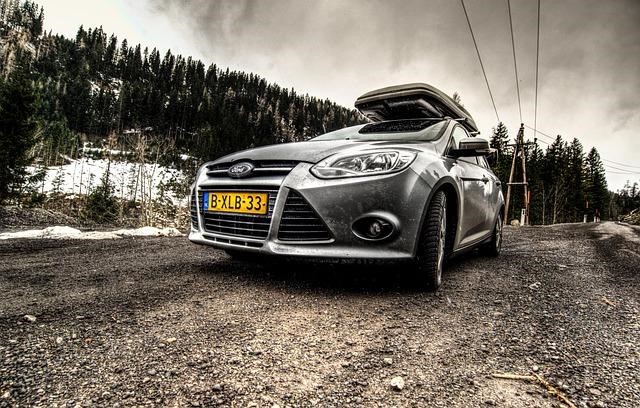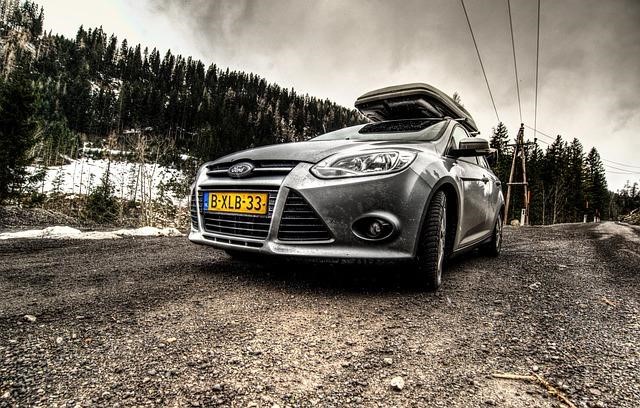
A roof rack is an important accessory and one of the best investments for your vehicle, especially when you occasionally need to transport anything that is too big for its interior.
Say, you’re an avid adventurer or set to go camping far from home. You’ll need to carry along items like a camping tent, sleeping bag, pillows, stoves and many other items that altogether won’t fit into your car’s interior.
A roof rack extends your vehicle’s carrying capacity with extra storage space for carrying large gear and other significant items.
If you’re looking to add a roof rack to your vehicle, there are a few things you’ll need to consider. In this beginner’s guide, we’ll take you through the steps needed to install a roof rack, ensuring a secure fit and safe travel.
What to Consider Before Installing a Roof Rack on Your Vehicle?
The first thing to consider before installing a roof rack is to decide which type is best for your vehicle and personal needs. For example, we have cars that come with provisions for roof racks. These are usually vehicles where the manufacturer pre-installs rails or tracks on the roof—all that remains is to install a roof rack with crossbars to connect to these side rails.
Some cars are, however, not built or modified this way. You’ll have to go all in and do the difficult job or opt for roof racks purposely made for such “naked” roofs (they have no rails or tracks). These roofs require a rack system that clamps around the door jams and will have more parts and accessories.
All in all, these roof racks are fairly easy to install.
Step-by-Step Guide on How to Install a Roof Rack in Your Car
Installing a roof rack on your vehicle serves several purposes, making it a useful accessory for various activities.
Here is a step-by-step guide on how to install a roof rack in your car:
Assemble Everything You Need
First, unpack the roof rack kit and lay out all the components. These usually include towers, crossbars, various bolts, and install adapters. They’re mostly the tools you’ll be using during the installation process.
However, even if you have successfully done such modifications on your car, each roof rack is different and will depend on the roof of your vehicle. It could also be that some roof racks are quite particular with your car model, so to have a smooth installation, it would be better to follow the instructions from the manufacturer.
For example, if you own a Jeep Gladiator make sure you install a Jeep Gladiator roof rack by following the detailed instructions of the manufacturers.
Clean and Prepare Your Vehicle’s Roof
Cleaning is an essential step in preparing your vehicle roof. You should ensure your car roof doesn’t have any dirt or anything that could be of a safety concern. Start by cleaning any debris that may have fallen on the roof.

You can either use a soft brush or sometimes with bare hands.
Generally, installing a rack on a dirty roof may make it harder to attach parts of the rack system. A clean and dry surface means a safe fit. It also prevents any damage or interference during the installation process.
Mark the Attachment Positions to Place Towers
To get the right measurements and the correct distance between the towers, measure the width of the car roof. They’re usually equidistant so as not to tilt over to one side. If your car already has mounting points or tracks, align your measurements to make the set-up easier.
You should then carefully place the towers in the marked positions and align them correctly. Cars with fixed points make the entire process easier— you can fix the towers to these points using the hardware provided in your kit.
However, for vehicles without fixed points, the goal should be to ensure each tower sits even on the roof. Always position the mounting towers according to the marked points and align them correctly.
Attach the Crossbars
You should start by separating the foot mount openings into wider positions to fit the crossbars perfectly. Follow up by inserting the crossbars between the four mounts. You should now have two crossbars with foot mounts loosely attached to both ends.
Determine the correct width between mounts for your car by measuring from the inside edge of the foot mounts. Once the crossbar distance between mounts is within the correct length, tighten the adjustments before setting the roof rack.
Secure the Roof Rack in Place
Tighten all bolts and screws, including those from the towers to your car, and from the towers to the crossbars. Use a torque wrench or screwdriver and strictly follow the manufacturer’s recommendations on the amount of torque to apply.
Once the roof rack is fully installed, give it a firm shake to test its stability. You can also check its stability through a few driving tests over a short distance. This is highly important as driving will cause vibrations that can loosen bolts, especially if it’s your first installation.
Additional Roof Rack Installation Considerations
Before purchasing and installing a roof rack, you should consider a few things to help determine which option best suits your needs and vehicle. Most roof racks do not fit all vehicles and are designed to cater to specific vehicle needs, such as:
Weight Limits
The weight capacity depends on the roof rack and vehicle model. Follow the manufacturer’s recommendations for maximum load-carrying capacity and always stay within that. Check the roof rack and roof of your vehicle for weight limits.

Exceeding those limits can damage your car or cause unsafe driving conditions. Besides, reports suggest that mounting roof racks may have a significant impact on your vehicle’s fuel economy. So, you want to ensure the roof rack you install doesn’t lead you into exceeding your vehicles load limit.
Aerodynamics
Aligning the crossbars properly on the roof reduces the wind resistance when driving, ensuring there’s no noise coming from the top of your car. However, if you notice a loud whistling sound while driving, you can invest in wind deflectors as additional accessories or adjust the position of the crossbars.
Accessories and Attachments
Depending on what you plan to carry and the amount of load your roof can hold, some roof racks will require additional accessories. For instance, specific gear like bikes or kayaks require attachments that hold them securely while on the roof.
Final Thoughts
When you install a roof rack on your vehicle, you increase its off-road capability and load capacity. A roof rack also enhances the appearance and usefulness of your car, whether you’re an avid outdoor enthusiast or just need more space for storage. It can be a wise purchase, especially if you’re a Jeep owner who wants to get the most out of their vehicle.


